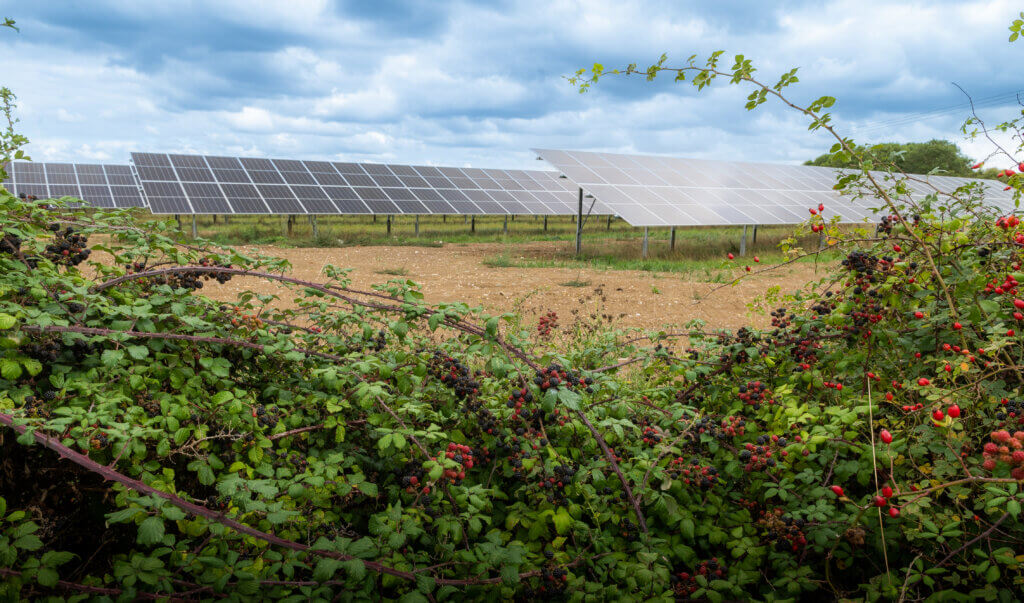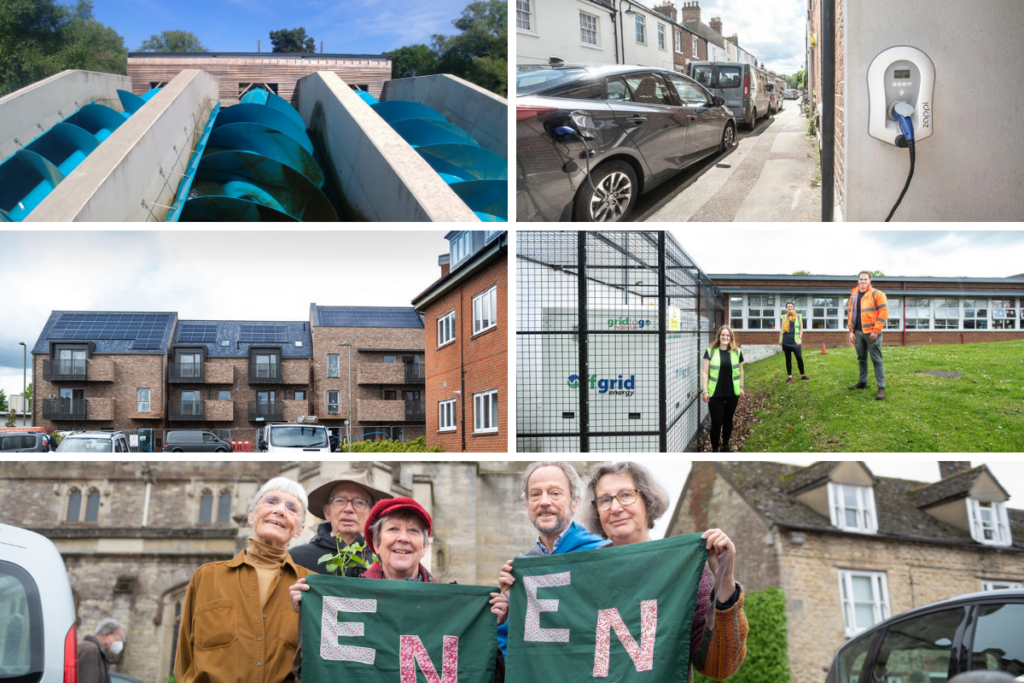What Project LEO has meant for Low Carbon Hub
Looking back on the achievements of the groundbreaking Project LEO initiative that ended in March 2023, Low Carbon Hub CEO, Barbara Hammond said:
Nothing like this has been done in the UK before; everyone’s been learning, and it has been a programme that gives us enormous hope for the future. We’ve demonstrated a way forward that we can keep working on. We’ve gone from advocating for change to a position of actually being able to make that change happen.
Barbara’s optimism about the potential for learning from Project LEO to radically change the way our energy system works is shared by everyone at Low Carbon Hub who has worked on the project. Project LEO was a trailblazing collaboration of numerous stakeholder organisations, pooling expertise, talent, and resources to provide us with a comprehensive view of how radical changes to our energy system could be implemented.
In this blog, we look at our involvement in Project LEO, what we brought to the table, what we learned and what this means for our future.
LEO: A brief overview
Launched in 2019, Project LEO (Local Energy Oxfordshire) was a unique collaborative cross-sector project, with a series of innovative trials at its heart. The project aimed to understand how the application of new technologies and services can benefit people, communities, and the energy system, while taking us a step closer to achieving our net zero goals.
In the trials the team wanted to find out if, and how, we can make changes at a local level to create a more flexible energy system, where communities have greater control of their energy generation, storage and use. It also looked at how this flexibility could provide maximum benefit to the grid and end users, individually and at a community level.
Who did we work with on LEO?
Project LEO was a £40 million collaboration project funded in part by InnovateUK and partner organisations. Many organisations, including Scottish and Southern Energy Networks, Low Carbon Hub, the University of Oxford, Oxford Brookes University, Oxfordshire County Council, and Oxford City Council, contributed to Project LEO’s success.
Due to the complexities and technical requirements of the Project LEO trials, we could not have achieved the levels of success that we did without the invaluable contributions of partner organisations, local governments, communities, individuals, and energy suppliers.
What was involved?
Project LEO was created to help us understand not only how a flexible energy system can work efficiently but also how the new markets that must be created to support it can generate real benefits for our communities and network operators.
Based in Oxfordshire, LEO’s diverse public and private sector partners collaborated to run numerous trials to identify the most efficient processes and technologies to support a smooth transition to a low-carbon, smart, and flexible energy system. Throughout the project, each partner produced reports that detailed the key learnings from the trials and how these are being used to inform future system developments.
While describing every aspect of the LEO project would be a extremely complex, we can summarise what we were doing in three parts:
- Renewable energy generation and storage. We investigated how communities can generate and own clean energy through individual, and community-owned renewable energy assets (solar panels, hydroelectric stations, battery storage, and electric vehicles). Many of these aspects were assessed in the Project LEO trials to provide insight into how they can be best used locally, reducing overall reliance on the network.
- Creating a market for energy flexibility. To truly smarten our energy system and benefit everyone, we must develop a viable commercial marketplace for trading energy flexibility. Project LEO provided invaluable insights that will help us develop this marketplace in the future.
- Testing how our energy systems and networks must adapt to take advantage of the flexibility provided by new renewable technologies and prepare them for the transition to a smart local energy system. Project LEO assessed the technical and regulatory limitations and looked at solutions that can be put in place to ensure our systems and technology are fit for the future.
You can read the longer project conclusion report here.
Why was Oxfordshire an ideal location for the project?
Oxfordshire benefits from an already established network of people who have been working for many years to explore energy innovation and are committed to creating change. The six local authorities are also highly engaged in tackling the climate emergency and have committed to ambitious net-zero targets.
This highly proactive population and governance, paired with the existing renewable energy infrastructure, made Oxfordshire perfect for creating a ‘micro energy system’, one that is small enough to manage and test but that will provide robust learnings that can be rolled out on a larger scale nationwide.
Low Carbon Hub’s role
We are a well-established Oxfordshire social enterprise aiming to show that we can meet our energy needs in ways that are both good for people and good for the planet.
Over the years, we have developed a portfolio of community-owned renewable energy installations across Oxfordshire, producing clean energy and accelerating the transition to a zero-carbon energy system. In addition to the generation of clean energy, the surplus income created is reinvested into further low-carbon, energy efficiency, or renewable energy initiatives in the local area.
Low Carbon Hub’s role in Project LEO involved using our experience to develop and manage a portfolio of local energy generation, balancing and demand assets, informing new investment models.

Because of our experience working closely with communities, we undertook the role of project manager for the Smart and Fair Neighbourhood Trials, working with the communities and other partner organisations to develop the parameters of the trials, run them, then gather and collate the findings.
Our existing portfolio of community-owned energy assets meant we were able to work with the project partners, including SSEN as our network provider, to see how these can best be used to generate, store, and use energy locally. We also worked with individual households (e.g. in Osney Supercharge) who generate and store electricity to see how we could pool our resources for the greatest flexibility.
We looked at ways the electricity system can be optimised from the bottom up so that local energy generators can play a bigger role. Part of this involved developing tools to monitor and evaluate local energy generation and usage. As part of Project LEO, we developed People’s Power Station 2.0, a cloud-based software tool that gathers intelligence from energy assets, such as solar PV or batteries, and can even control the amount of energy they export (or import).
People’s Power Station 2.0 played a key role in the Project LEO trials and has helped us learn how we can optimise the performance of energy generation assets.

How has Low Carbon Hub benefited?
Over the course of project LEO, and since its conclusion, the team at Low Carbon Hub has worked with several external partners, local authorities, and members of the local community, sharing expertise, information, and data. The entire process has been incredibly beneficial for everyone involved.
We have always been about collaboration, but Project LEO enabled a step-change helping create a whole new ‘knowledge ecosystem’ where communities and stakeholders can learn from one another, and find the right solutions to develop a smarter local energy system that works for everyone.
For Low Carbon Hub, being part of Project LEO created multiple benefits. The three main ones were:
Development of Local Area Energy Plans
Project LEO has shown us the value of local energy planning in achieving our net-zero goals. As part of Project LEO, we created the Community Action Plan for Zero Carbon Energy (CAPZero), the UK’s first community-based energy action plan. Local Area Energy Planning employs a data-driven approach to help us achieve our net-zero goals. It takes a bottom-up approach, starting at the local level and considering the unique features and requirements of the local area first, flipping the current energy supply structure on its head. More information can be found here.
Identifying routes to market for our community energy portfolio
Here at Low Carbon Hub, we are a major generator of community energy, installing and managing renewable energy generation projects alongside businesses, schools, and communities all over Oxfordshire. Project LEO has helped us take the next step in identifying new ways we can create additional value from the electricity we generate, by participating in flexibility markets.
Project LEO’s market trials worked on developing markets and platforms for a new energy system. This system allows for the trading of energy generated and stored in various locations, creating new opportunities for everyone to benefit. This involves an increased use of flexible energy as part of a smart local energy system
Clearly communicating the concept of energy flexibility
One of the most important lessons we learned as part of Project LEO was the importance of learning how to talk to people about participating in a flexible energy system. For us to reach net zero, people from all walks of life must get involved in ways they have not done before.
However, the concept of energy flexibility is new and can be difficult to grasp. We discovered that for people to fully participate and benefit, there needs to be clear understanding of the benefits, as well as the potential risks involved. Only then can we begin to build a just and equitable energy system.
